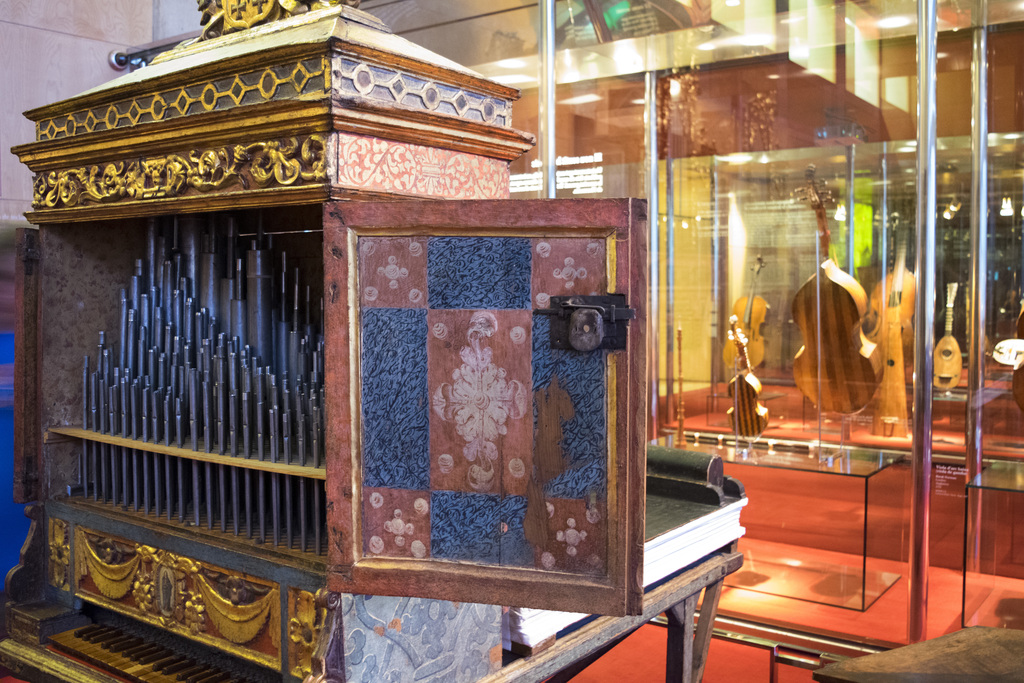

| Conegut com aragonès o zaragozano, aquest orgue va ser construït a Aragó durant la segona meitat del segle XVII. És un orgue positiu de taula, és a dir, es col·loca damunt d'una taula i no a peu pla. Té quaranta-dues tecles, dues manxes i el moble presenta decoracions molt treballades a base de policromia i estucats. Pel que fa als registres, és destacable el fet que hi conviuen dues tècniques: la del registre sencer i la del registre partit o mig registre. Aquesta consisteix en el fet que no basta un sol tirador per a cada joc de tubs sinó que en són necessaris dos, un per la meitat esquerre del teclat i l'altre per la meitat dreta. En aquest orgue els registres no tenen tiradors, sinó que l'organista posa i treu els registres movent els caps de les corredores, que surten pels costats de la caixa. Està restaurat i es toca regularment en classes i també en concerts. | Known as the Aragonese or Zaragozano organ, this organ was built in Aragon during the second half of the 17th century. It is a positive table organ, that is, it is placed on a table and not on a flat foot. It has forty-two keys, two bellows and the furniture has very elaborate decorations based on polychrome and stucco. Regarding the registers, it is noteworthy that two techniques coexist: that of the whole register and that of the split register or half register. This consists of the fact that a single handle is not enough for each set of pipes but two are necessary, one for the left half of the keyboard and the other for the right half. In this organ the registers do not have handles, but the organist puts in and takes out the registers by moving the heads of the runners, which come out of the sides of the box. It has been restored and is played regularly in classes and also in concerts. |

